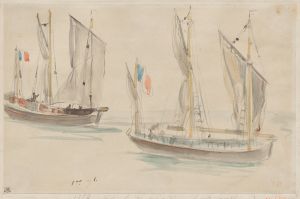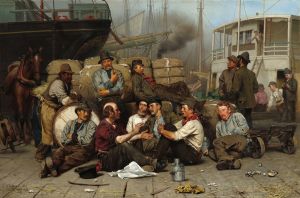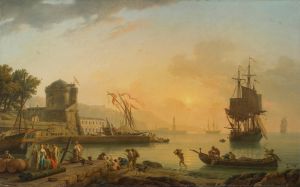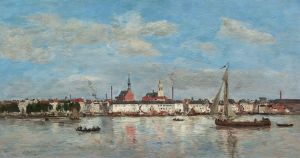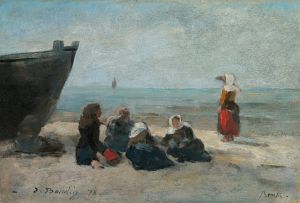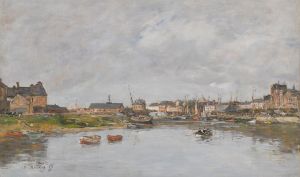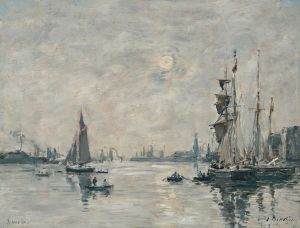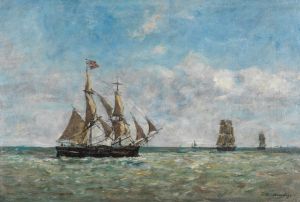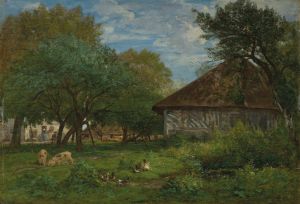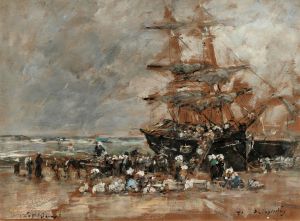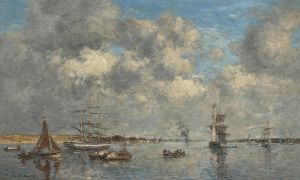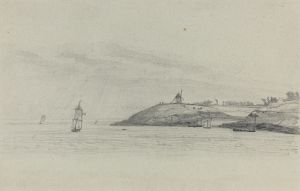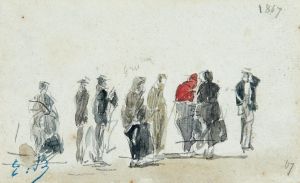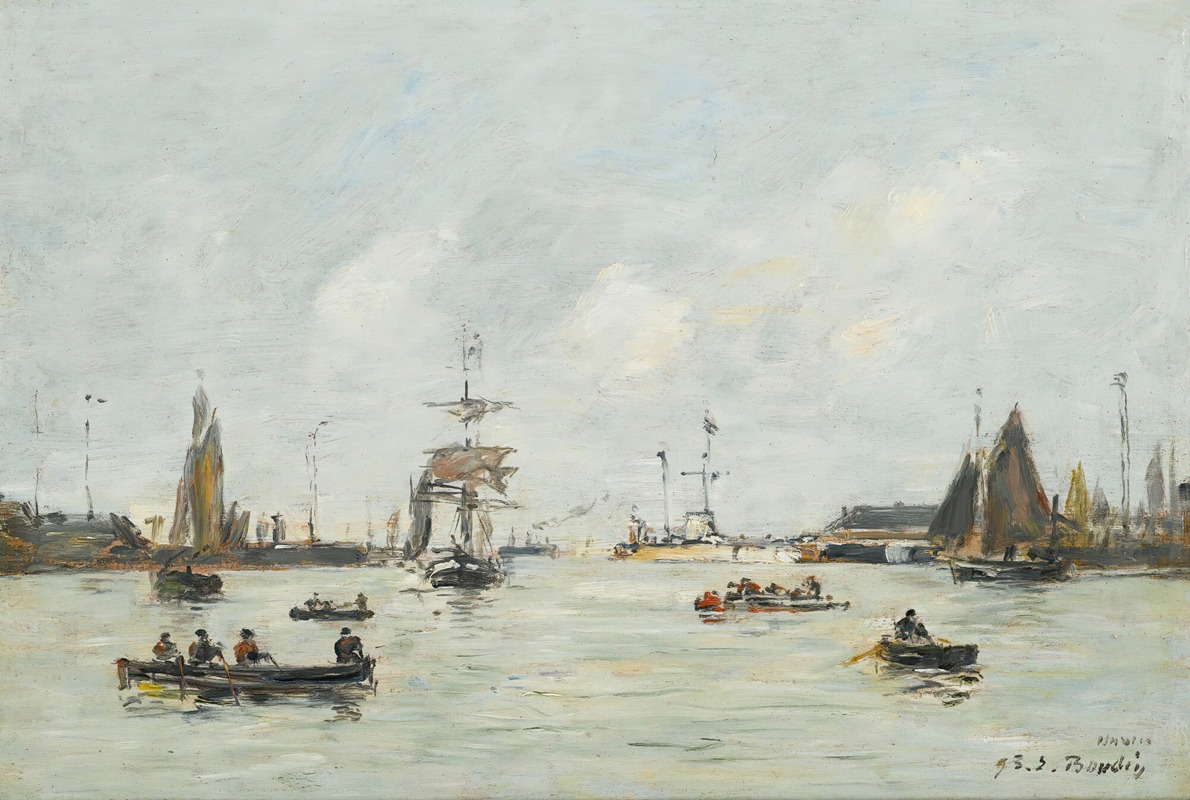
Le Havre. L’avant-Port
A hand-painted replica of Eugène Boudin’s masterpiece Le Havre. L’avant-Port, meticulously crafted by professional artists to capture the true essence of the original. Each piece is created with museum-quality canvas and rare mineral pigments, carefully painted by experienced artists with delicate brushstrokes and rich, layered colors to perfectly recreate the texture of the original artwork. Unlike machine-printed reproductions, this hand-painted version brings the painting to life, infused with the artist’s emotions and skill in every stroke. Whether for personal collection or home decoration, it instantly elevates the artistic atmosphere of any space.
"Le Havre. L’avant-Port" is a painting by the French artist Eugène Boudin, who is renowned for his seascapes and beach scenes. Boudin was born on July 12, 1824, in Honfleur, France, and he is often considered one of the precursors to the Impressionist movement. His works are characterized by their depiction of the natural light and atmosphere of coastal scenes.
The painting "Le Havre. L’avant-Port" captures the bustling port of Le Havre, a significant maritime city in the Normandy region of France. Le Havre has historically been one of France's most important ports, serving as a gateway for trade and travel. Boudin's choice of this location reflects his deep connection to the sea and his interest in maritime activities.
In "Le Havre. L’avant-Port," Boudin employs his characteristic loose brushwork and keen observation of light and weather conditions. The painting likely dates from the late 19th century, a period when Boudin was actively painting scenes of the Normandy coast. The composition typically includes elements such as ships, boats, and the port infrastructure, all rendered with a sense of immediacy and movement.
Boudin's technique involves the use of light, airy brushstrokes to convey the transient effects of light and atmosphere. This approach would later influence the Impressionists, including Claude Monet, who was a friend and admirer of Boudin. In fact, Boudin is known to have encouraged Monet to paint en plein air (outdoors), a practice that became a hallmark of the Impressionist movement.
The painting is a testament to Boudin's skill in capturing the essence of the maritime environment. His ability to depict the interplay of light and water, as well as the dynamic activity of the port, provides viewers with a vivid sense of place and moment. The sky, often a significant element in Boudin's works, is rendered with a particular attention to the changing weather conditions, adding to the overall atmosphere of the scene.
"Le Havre. L’avant-Port" is part of Boudin's extensive body of work that focuses on the coastal regions of France. His paintings are celebrated for their naturalism and their ability to convey the beauty and vitality of the French coastline. Boudin's work is held in high regard and can be found in numerous museums and private collections around the world.
Eugène Boudin passed away on August 8, 1898, in Deauville, France. His legacy endures through his contributions to the development of landscape painting and his influence on the Impressionist movement. "Le Havre. L’avant-Port" remains an important example of his work, showcasing his mastery of capturing the maritime life and the ever-changing effects of light and atmosphere.





